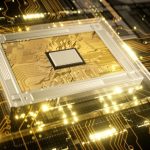NASA is advancing towards the 2027 launch of the Nancy Grace Roman Space Telescope (RST), marking a significant step in astronomical research. The integration of the mission’s sunshade into the outer barrel assembly at NASA’s Goddard Space Flight Center ensures the telescope can achieve its high-resolution imaging goals. This development promises to enhance our understanding of the universe by enabling extensive wide-field surveys.
Over the years, updates on the Roman Space Telescope have highlighted milestones in its design and testing phases. Compared to earlier reports, the successful attachment of the sunshade represents a crucial progression from theoretical models to tangible components. This achievement underscores the meticulous engineering efforts that have consistently pushed the project closer to its deployment phase.
How Will the Sunshade Enhance Telescope Performance?
The sunshade is essential for maintaining the telescope’s temperature stability and protecting its instruments from sunlight. Similar to the James Webb Space Telescope’s shielding system, Roman’s sunshade consists of two layers of thermal blankets designed to block external light and micrometeoroids.
“We’re prepared for micrometeoroid impacts that could occur in space, so the blanket is heavily fortified,”
explained Brian Simpson, emphasizing the sunshade’s robustness and effectiveness in light filtration.
What Are the Next Steps in the Telescope’s Assembly?
Following the sunshade integration, the mission team will proceed with attaching the telescope’s solar panels and conducting comprehensive testing. The thermal vacuum and shake tests will simulate space conditions and launch vibrations, respectively. These steps are critical to ensure the telescope’s components function seamlessly once deployed in space.
What Scientific Goals Will Roman Achieve?
The Roman Space Telescope aims to survey billions of galaxies to investigate Dark Matter and cosmic expansion. Additionally, its advanced instruments will allow astronomers to image exoplanets, supermassive black holes, and stellar nurseries with unprecedented clarity.
“Roman is made up of a lot of separate components that come together after years of design and fabrication,”
stated Laurence Madison, highlighting the collaborative effort behind the telescope’s development.
The successful integration of the sunshade not only meets a critical milestone but also sets the stage for the remaining assembly and testing phases. As each component is meticulously evaluated, NASA ensures that the Roman Space Telescope will fulfill its mission objectives upon launch. This progress reflects NASA’s commitment to expanding our knowledge of the cosmos through cutting-edge technology and engineering.
As NASA continues to assemble the Roman Space Telescope, the collaboration between various teams and the rigorous testing protocols demonstrate the project’s readiness for the upcoming launch. The telescope’s advanced capabilities are expected to provide invaluable data, advancing our comprehension of the universe’s fundamental mysteries.










